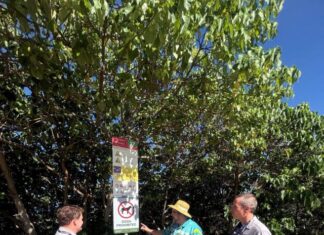The State government’s draft ShapingSEQ 2023 update (South East Queensland Regional Plan) has Noosa’s population at 76,000 by 2046 and proposes high rises over 9 storeys.
The public consultation process is over and the Deputy Director-General, Planning has indicated that the final plan will be ready by the end of this year. We will see if it comes up to scratch.
Australian governments and economists agree that Australia’s housing crisis is driven by an undersupply of housing. This is particularly critical at the lower end of the market. There is inadequate social housing and housing for low income people, victims of domestic crises, and workers.
Meanwhile housing demand will also keep increasing due to the need for immigration for national productivity and economic growth, and dwellings becoming uninhabitable due to floods and bushfires.
I recognise that every locality needs to play a role, but how much is enough? These are the recommendations I made in my submission.
Unrealistic Noosa population growth forecast
The 2017 SEQ Regional Plan estimated a population increase of 9,000 from 54,000 to 63,000 by 2041, requiring an additional 6400 dwellings. This assumed 1.4 people per new dwelling.
The draft 2023 Regional Plan has Noosa’s population increasing by 19,000 from 57,000 to 76,000 in 2046, requiring 4,900 additional dwellings. That assumes 3.9 people per new dwelling.
This appears at odds with the Minister for Planning/Deputy Premier Steven Miles’ Forward in the draft Plan:
“Changes to the population over time, with more smaller and single person households, means we need to provide housing options that respond to these choices. This plan aims to provide access to the types of homes that South East Queenslanders want where they want them”.
Projecting 3.9 people per new dwelling is not realistic. Hence the population increase of 19,000 seems unrealistic, given Noosa Shire’s limited urban footprint, dearth of Greenfields development opportunities, our aging demographic, and contemporary preferences for smaller households.
Noosa’s population increase consists largely of retirees, moving in from major cities, recently accelerated during COVID. Retirees are mostly either single or couples with no children.
Based on 1.4 people per new dwelling, the 4,900 new dwellings built by 2046 could realistically cater to a population increase of 6820, from 57,000 to 63,820. That would be congruent with the 2017 SEQ Regional Plan and the Deputy Premier’s observations.
Recommended Apartment Storeys Too High
The ‘Dwelling Diversity Targets’ proposed for Noosa in the draft Regional Plan are:
• Fewer new attached 1-3 storey low rise (semi-detached, row or terrace houses, townhouse, apartments)
• More new 4-8 storey medium rise apartments
• More new 9 storeys or greater high rise apartments.
This directly contradicts statements in the draft Regional Plan:
“Framing these cities will be our magnificent rural and natural areas, including Noosa, Lockyer, Somerset and Scenic Rim, which contain prosperous and attractive towns and villages. […] Growth will be directed to reinforcing the identities that we value and which make SEQ an attractive region to live in.”
To achieve this, it is totally inappropriate to decree significant increases in building heights.
Current height limits in Noosa Shire vary depending on zoning. In most cases, low density residential zones only allow up to two storeys and medium density residential zones up to three. The major centres and district centres allow variously between two and three storeys.
Any increases in storeys would need to be zone-specific. In centre zones and medium/high density residential zones, it could be feasible to allow one or two more storeys for some residential or multi-use buildings, perhaps varying in height.
Any higher than that will damage the Noosa look, and feel and the Noosa brand, which relies on its unique “magnificent rural and natural areas” to make it a special place to live and visit. As the economy is largely dependent on tourism, damaging the Noosa brand would damage the economy.
Within realistic Regional Plan height constraints, catering for population increase should be left to Noosa Council strategic planners to incorporate additional dwellings in the planning scheme.
Short Term Letting and Rental Affordability
Noosa Today’s article ‘Short Term Accommodation Review complete’ (8th August 2023) reported that as part of planning reforms, the State Government engaged the University of Queensland to assess the impacts of short term rentals on housing affordability. Planning Minister and Deputy Premier Steven Miles was quoted saying:
“The review found no clear alignment between the suburbs with the highest rent increases and the percentage of dwellings devoted to short-term rental. [….] The review emphasised the vital role of housing availability and supply in rental prices, highlighting the importance of having enough housing options for our community. It also noted that a one-size-fits-all solution could miss the mark in addressing local challenges.”
Noosa Council is known for its assertive approach to limiting short term accommodation and regulating short stay letting. The Council’s rationale has been to reduce amenity impacts in residential areas (noise, parking, rubbish) and to free up housing for permanent residents.
However the Noosa Council one-size-fits-all approach is having negative unintended consequences.
1. The 2020 Noosa Plan includes making short term accommodation (STA) an inconsistent land use in low density residential zones. This in effect disallows whole houses being used for STA, except for those with existing use rights, owner occupier absences of up to 60 days, and home hosted bed & breakfasts.
Owners may submit development applications, but these are unlikely to get approved. The fee for such applications is significantly higher than for standard developments. Furthermore, any house which has approval (due to existing use rights or other reasons) attracts higher general rates, plus the equivalent of a tourist levy, plus fees under the Council’s Short Stay Letting and Home Based Accommodation Local Law.
This applies to houses at all price points in the property market, with a belief that treating every property equally is more fair. The unintended consequence is that wealthy investors, who own expensive, well located houses as holiday homes, opt not to permanently let their houses, preferring to leave them vacant when they are not there, rather than deal with the council’s STA regulatory complexities.
The 2021 census showed that 1 in 3 houses were vacant in Noosa Heads and Sunshine Beach and 1 in 5 were vacant in Noosaville. These are suburbs where houses and rentals are expensive, not affordable. They are located where the greatest number of tourists want to stay, yet STA in these often vacant houses is not allowed.
2. The 2021 Short Stay Letting and Home Based Accommodation Local Law aims to ensure owners of STAs comply with certain requirements including having guests adhere to a code of conduct, signs with a contact for complaints, and paying fees.
This local law is applied not only to houses in residential zones, but also to resort units in tourist accommodation zones and residential zones. This has the effect of acting as a reverse price signal, dis-incentivising short term letting in resorts. Yet tourism is a major economic driver which benefits the community. Owners of resort units may choose to let their units to permanent residents, thereby avoiding the higher general rates, tourism levy equivalent charge and local law fees. The consequence is that fewer units are available for tourists in tourist resorts, leading to increased demand for short stays in houses.
3. Amendments to the Noosa Plan were approved for State Interest Review at a closed Noosa Council meeting in January 2023. One councillor’s newsletter intimated that the proposed amendments include making STA inconsistent “in all residential zones other than where they are home hosted”. If that same one-size-fits-all approach is the case, the same unintended consequences may arise.
Noosa Council Refusals of Affordable Housing Development Applications
In spite of the Federal Government allocating billions of dollars for social housing and affordable housing, construction is already meeting opposition from local councils and residents all around Australia.
Noosa Council has consistently justified refusal of development applications for affordable housing because of Noosa Plan minutiae or vocal lobbying by small groups of residents. Affordable housing in Tewantin, Noosa Heads and Cooroy has been knocked back.
There is no recognition given to compromises being needed to address a higher order issue (the housing crisis).
Council’s Housing Strategy, intended to address affordable housing, looked promising when it was adopted last year, but tangible outcomes are yet to be seen.
To meet housing needs, state governments will need to address barriers in council planning schemes and local resistance.







